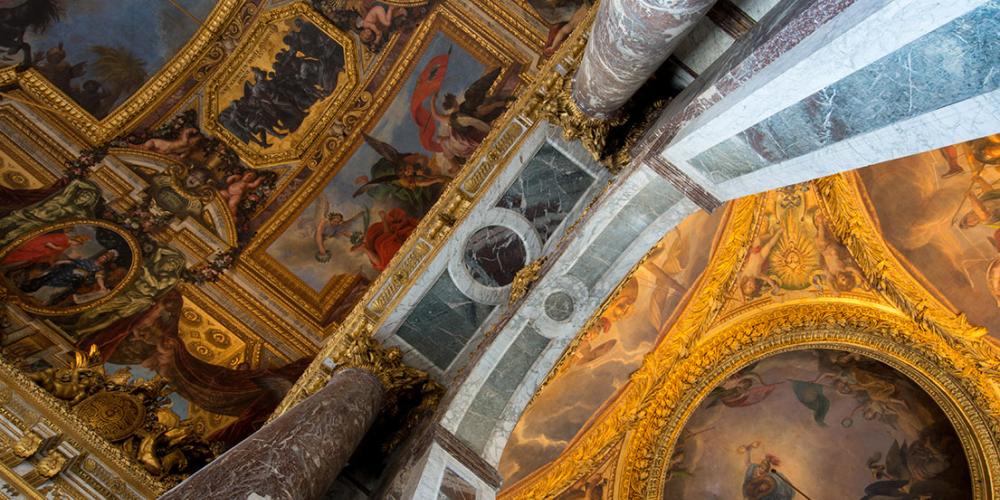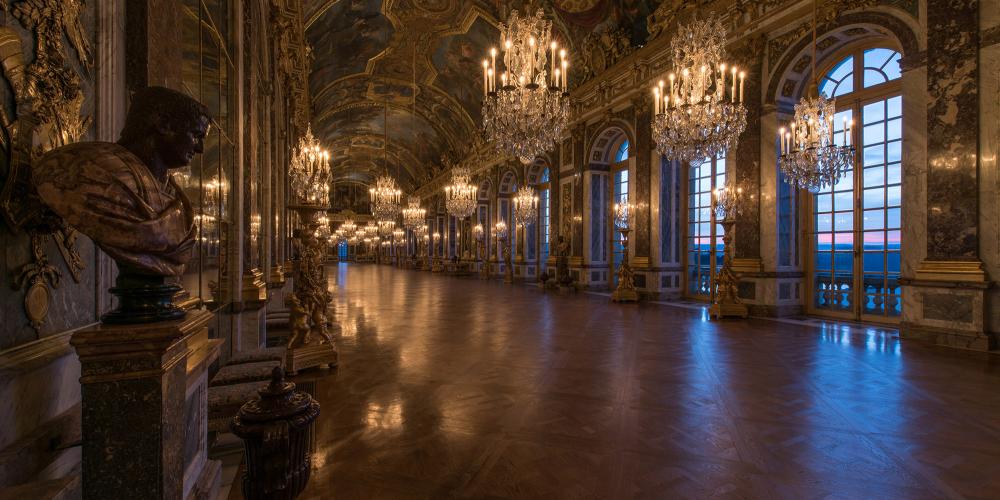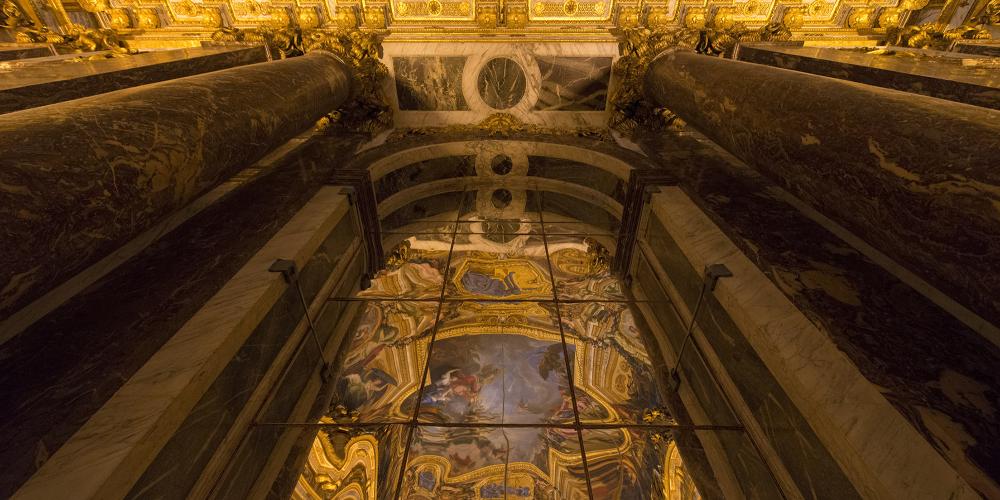Hall of Mirrors

Following on from the victory over the three united powers, depicted in the War Room, the whole length of the Hall of Mirrors (73m) pays tribute to the political, economic and artistic success of France. Political successes are illustrated through the 30 painted compositions on the vaulted ceiling by Le Brun, which depict the glorious history of Louis XIV during the first 18 years of his reign, from 1661 to the peace treaties of Nijmegen. Military and diplomatic victories and reforms with a view to reorganising the kingdom are illustrated through allegories from Antiquity.
Economic prosperity is revealed in the number and size of the 357 mirrors bedecking the 17 arches opposite the windows, demonstrating that the new French manufacture could rival the Venetian monopoly on mirror manufacturing. At the time such items were a great luxury. Artistic success is shown by the Rouge de Rance pilasters topped with capitals of gilded bronze based on a new design, which was referred to as “the French style” and was created by Le Brun upon the request of Colbert. The design incorporates the national emblems, with a fleur-de-lis topped by a royal sun between two Gallic roosters (the Latin word for rooster was gallus).
Courtiers and visitors crossed the Hall of Mirrors daily, and it also served as a place for waiting and meeting. It was used for ceremonies on rare occasions, for example when sovereigns wanted an extra dash of lavishness for entertainment (balls or games) held for royal weddings or diplomatic receptions. It was also here that the Treaty of Versailles was signed on 28 June 1919, ending the First World War. Since then, presidents of the Republic have continued to receive official guests here.



